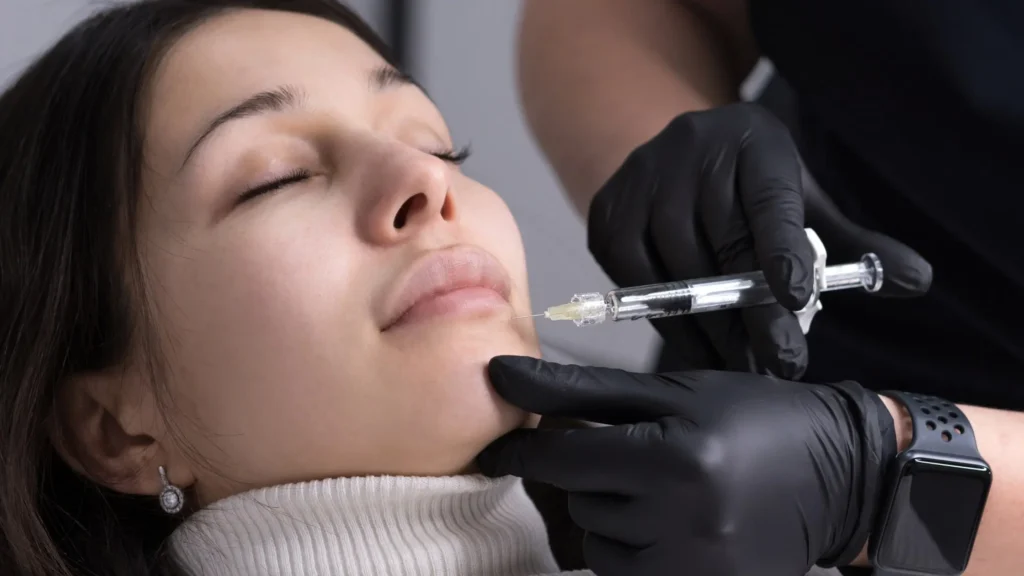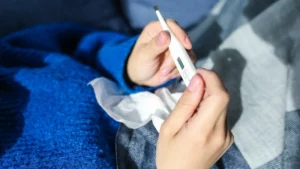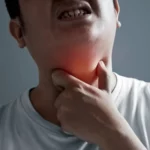Juvederm is one of the leading products in the cosmetic industry, highly sought after for its effectiveness in creating fuller, more voluptuous lips. For many, it’s the go-to choice for enhancing facial aesthetics.
However, some patients notice small, white spots on their lips after undergoing a Juvederm treatment. These spots, known as Fordyce spots, can cause concern and questions about their origin and whether they are linked to the lip filler procedure.
What are Fordyce Spots?
Fordyce spots are sebaceous or oil glands that are naturally occurring on the body. They are typically not harmful or painful but are visible as small, pale bumps on the skin.
On the lips, they can be particularly noticeable due to the thin, translucent skin in that area.
Normal Occurrence vs. Post-Juvederm Occurrence
It’s important to differentiate between Fordyce spots that were present before treatment and those that appear post-treatment. The procedure may bring pre-existing spots to light due to swelling or manipulation of the skin during injection, making them more apparent than before.
Read More: Why Do I Have a Bump on My Gums?

What Causes Fordyce Spots on Lips After Juvederm?
Lip Anatomy and Biology
The unique structure and context of each individual’s lips play a role in the development of these spots. Glands could become more visible as the skin stretches after filler injections.
Injection Technique and Depth
The technique of the injector and the depth at which the filler is placed can influence the prominence of Fordyce spots.
An expert injector will understand the balance between achieving optimal results and reducing the potential for side effects such as spot visibility.
Filler Material and Composition
The type of filler used can also have a say in the appearance of Fordyce spots. Different formulations of hyaluronic acid-based fillers and their interaction with lip tissue can lead to varied outcomes.
Individual Skin Characteristics
No two patients are identical, and individual skin characteristics, including thickness and elasticity, can impact the likelihood of spots appearing post-procedure.
Addressing Concerns and Managing Fordyce Spots
Communication with the Patient
Open discussions with the practitioner before and after the procedure are vital. Understanding what to expect can alleviate concerns and help in managing the appearance of Fordyce spots.
Post-treatment Care and Instructions
Following post-treatment care instructions carefully can facilitate the healing process and possibly reduce the prominence of any Fordyce spots.
Timeframe for Resolution
Many occurrences of Fordyce spots post-filler tend to resolve as swelling diminishes. Knowing the typical time frames can reassure patients that the effects are often temporary.
Treatment Options if Necessary
If Fordyce spots continue to be a concern, there are treatments available, ranging from topical creams to laser therapy, depending on the severity and the patient’s desire for correction.

Prevention and Minimization Strategies
Pre-treatment Evaluation and Assessment
A thorough pre-treatment evaluation can identify the potential for the development of Fordyce spots and set realistic expectations.
Proper Injection Technique
A skilled injector will employ the proper technique to minimize changes to lip texture, including the appearance of unwanted bumps or spots.
Filler Selection and Customization
Customizing the type and amount of filler used can influence the final aesthetic result. Choosing the right product and approach for each individual is key.
Conclusion
The appearance of Fordyce spots on the lips after a Juvederm treatment can be concerning for patients, but with the right knowledge and communication, they can be effectively managed.
Practitioners need to acknowledge and soothe patient concerns, emphasizing the importance of open dialogue and careful procedure planning.
Patients can often enjoy their enhanced lips without long-term cosmetic downsides by practicing diligent care post-treatment and seeking expert advice as needed.
Whether these spots are new or simply more noticeable post-treatment, there are paths toward resolution and understanding.
Remember, for most, the allure of transformative, rejuvenated lips outweighs the temporary inconvenience of these minor aesthetic issues.
Frequently Asked Questions (FAQs)
Q: Are Fordyce spots on the lips caused by Juvederm injections?
A: No, Fordyce spots are natural oil glands present in many people; however, they might become more noticeable after Juvederm injections due to swelling and stretched skin.
Q: Can Fordyce spots appear as a side effect of lip fillers?
A: The spots themselves are not a side effect of the filler, but their visibility can increase as a result of the treatment.
Q: Will Fordyce spots resulting from lip fillers go away on their own?
A: If the spots were already present but became more prominent due to the treatment, they may decrease in visibility as the swelling subsides. If they persist, consult your practitioner for treatment options.
Q: Are there any preventive measures to avoid the heightened appearance of Fordyce spots after Juvederm?
A: Ensuring a thorough pre-treatment assessment and discussing your concerns with a skilled practitioner can help minimize the chance of noticeable Fordyce spots after treatment.
Q: What remedies are available if Fordyce spots become a concern after getting lip fillers?
A: Treatments might include topical creams, laser therapy, or other dermatological treatments advised by your healthcare provider, tailored to the severity and your cosmetic preferences.







